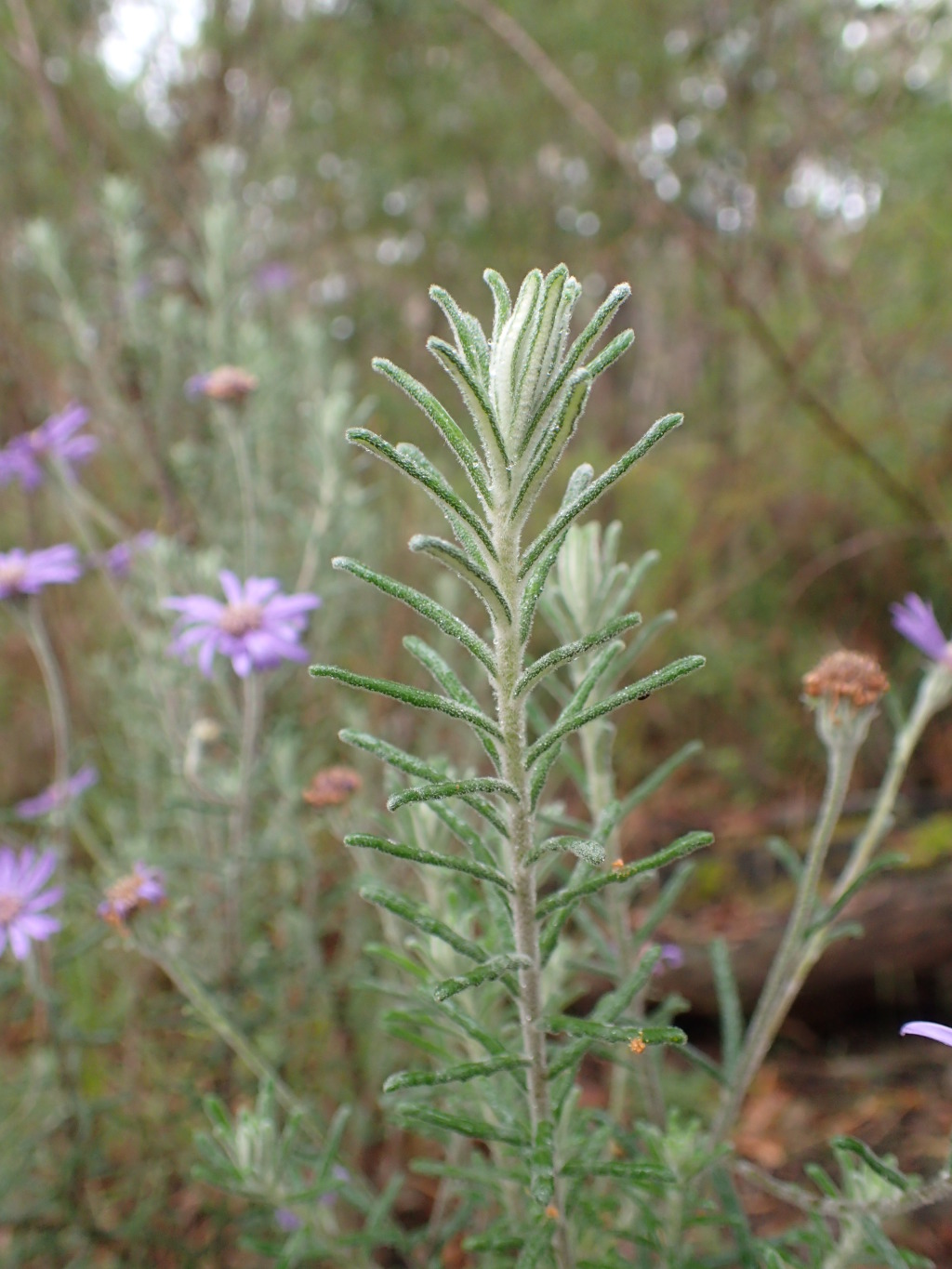Olearia asterotricha
(F.Muell.) Benth.Rather sprawling shrub to c. 2 m high; branchlets stellate-tomentose. Leaves alternate, sessile or subsessile, linear, oblong or obovate, 6–30(–75) mm long, 2–6(–10) mm wide, green above with scattered to dense stellate hairs, grey to brownish and densely stellate-tomentose below; margin revolute, entire, sinuate or lobed to c. halfway to midrib. Capitula 20–40 mm diam., terminal and near-terminal, solitary or in clusters, usually pedunculate with peduncles to c. 50 mm long; involucre c. hemispherical, 4.5–7 mm long; bracts 1–3-seriate, subequal, stellate-tomentose. Ray florets 9–21, mauve, blue or white, ligules 7–15 mm long; disc florets 25–40, yellow or purplish, sometimes with a single stellate hair on the tip of each lobe. Cypsela cylindric, 6–8-ribbed, c. 3 mm long, glabrous to sparsely sericeous; pappus bristles straw-coloured, c. 4 mm long
GleP, Brid, VVP, GipP, CVU, GGr, DunT, EGL, WPro, HSF, HNF. Also N.S.W.
4 subspecies, 3 in Victoria.
Previous records of the species for East Gippsland are based on misdetermination of specimens, most of which are O. rugosa. Both these species have geographically disjunct subspecies with distinct leaf morphologies.
Olearia asterotricha subsp. glaucophylla Messina occurs north of Mittagong in New South Wales. This subspecies is distinguished by its distinctly bluish leaves that are lobed in the distal half, and white ligules.
Walsh, N.G.; Lander, N.S. (1999). Olearia. In: Walsh, N.G.; Entwisle, T.J., Flora of Victoria Vol. 4, Cornaceae to Asteraceae, pp. 886–912. Inkata Press, Melbourne.
 Spinning
Spinning
